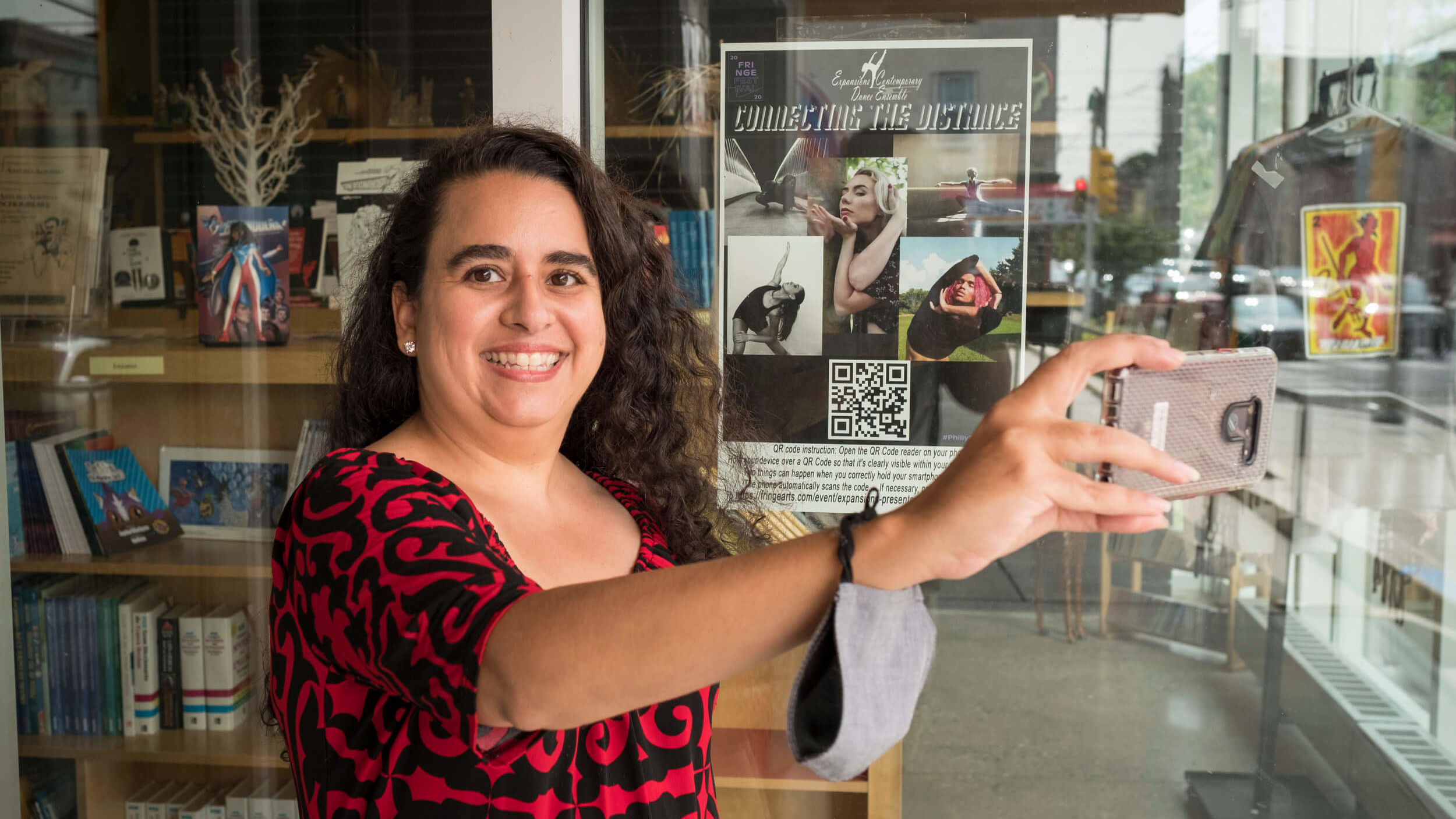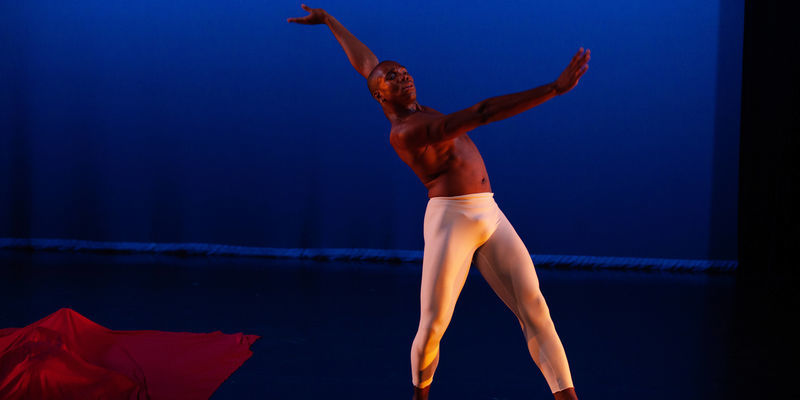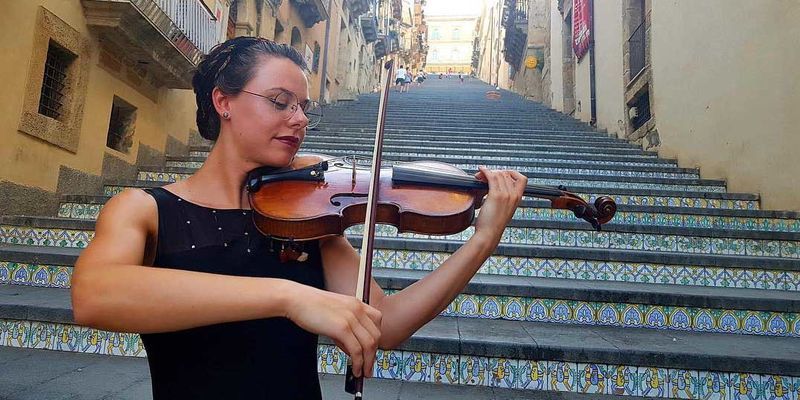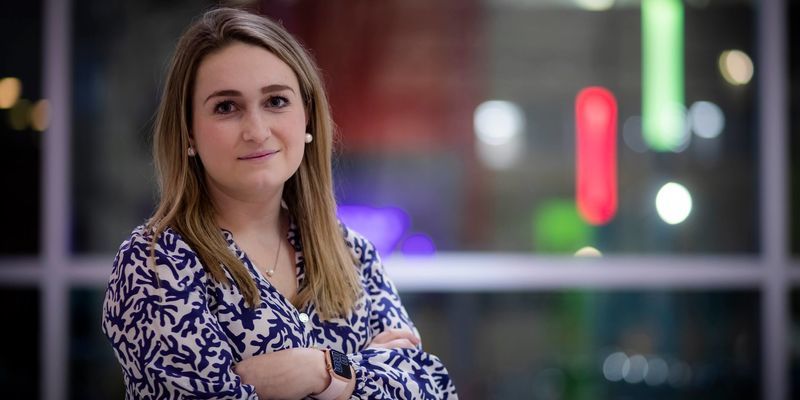A new dance show reimagines performances for the pandemic era
In the age of the coronavirus, Connecting the Distance recreates the communal experience of watching a dance performance.

For many of us, 2020 has been the year of staying put. The coronavirus pandemic led to lockdowns and sheltering in place, confining us to our homes and restricting our movements.
Christina Castro-Tauser, BYR ’18, adjunct instructor of dance at Boyer College of Music and Dance, has used these restrictions as inspiration for a unique experience: a walking tour featuring virtual dance performances.
Part of this year’s Fringe Festival, Connecting the Distance combines pre-recorded dance pieces and individual locations to create an interactive walking tour that viewers explore at their own pace.
Audiences follow a map to a series of destinations, scan a QR code at each site and watch a performance specifically chosen for that location. Castro-Tauser choreographed each piece and matched them to places in Mt. Airy, where she lives, and North Philadelphia, where she teaches at both Temple and Taller Puertorriqueño.
She developed the idea in early April, during lockdown. She was teaching Embodying Pluralism—a course in Temple’s General Education Program—and spending a lot of time on Zoom and decided she could use it to connect with other dancers. “I just knew that I wanted to start experimenting and exploring and creating choreography,” she said.
Castro-Tauser started talking to dancers in Philadelphia, New York and Georgia and realized she wanted to create something more than a performance over Zoom.
“I didn’t want to leave it virtual,” she said. “I wanted to take it into the community. I wanted to reach out to both nonprofits and small organizations and I wanted to get people walking safely [outside].”
She chose places that held a special significance for her and matched them with performances based on feeling and mood.
Connecting the Distance features nearly two dozen dancers from Expansions Contemporary Dance Ensemble, which Castro-Tauser founded, and Mt. Airy Collective. She worked with them over Zoom, creating movements intuitively.
Among the Temple alumni is Courtney Pilgreen, BYR ’19, who performs a solo piece that appears at Franny Lou’s Porch. Castro-Tauser was inspired by the display of the oropendola—a bird found in the Caribbean—which Pilgreen imitates with graceful tilts and dips. “It's very much about advocacy for Black Lives Matters and also about the social work that Fannie Lou Hamer did,” Castro-Tauser said.

Castro-Tauser chose locations where communities usually gather. (Photo by Joseph V. Labolito)
She recorded most of the performances herself on Zoom. The Distance ensemble was also given free access to the FringeArts stage and recorded some pieces there, with appropriate physical distancing.
Composer Christopher Farrell, who’s also an adjunct at Boyer, wrote the music for most of the show, composing some of his score after Castro-Tauser had developed the choreography.
For her, putting the show together has been part creation, part curation. Despite being recorded separately, some of the pieces are designed to interact with their environments. One performance plays at a clay studio, where it becomes one of multiple layers of movement.
“If you look through the windows at the right time during the day,” she said, “there’s actually people working on clay in the studio.”
Connecting the Distance is free for Temple students through the GenEd Program’s PEX Passport, which encourages Owls to explore the arts and cultural scene in Philadelphia and become engaged members of the city’s cultural community.
The show also has its roots in courses Castro-Tauser took during her MFA at Temple, particularly Dancing Self in Community and Choreographing Philadelphia, which includes an assignment based on students taking a walk and making videos about what they found.
“If you put what we learned in those two courses together, I can see where these nuggets are,” she said, “these ideas put into my head.”
As we’re being asked to keep our distance, the show recreates the communal experience of watching dance. “You’re going to see it where somebody else has seen it,” Castro-Tauser said, and “when you're sitting at the spot, you're going to be surrounded by people.”
“Dance talks a lot about the elements of dance: time, energy, space,” she said. Distance “breaks those continuances of what a dance show feels like,” because one person could be watching part of the show in North Philadelphia while another watches something different elsewhere.
She feels art is especially important now. “We need to be doing, creating, speaking up for what we believe in,” Castro-Tauser said. “We have to be in touch with our community, people around us. And we need each other.”
—Edirin Oputu


